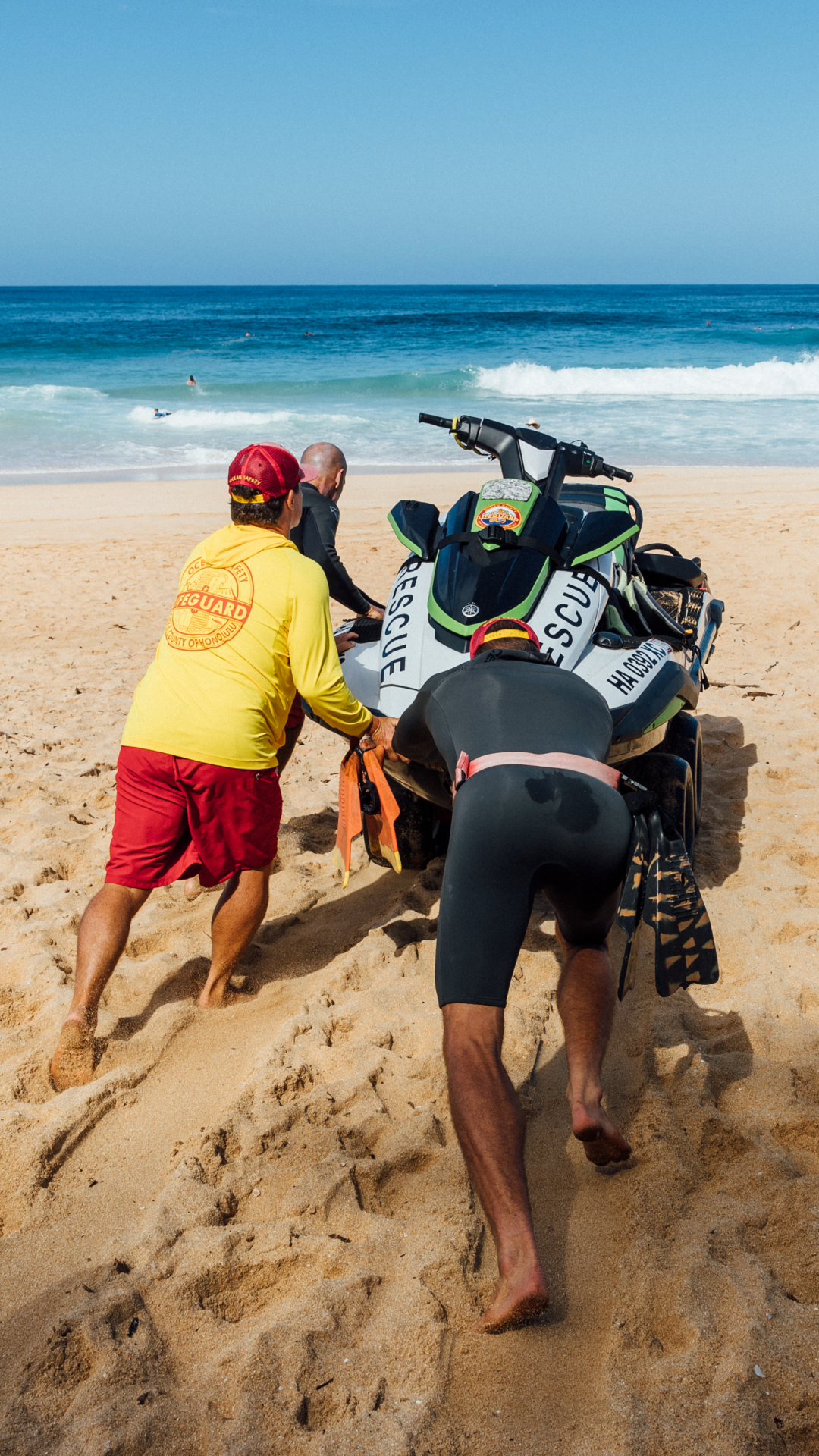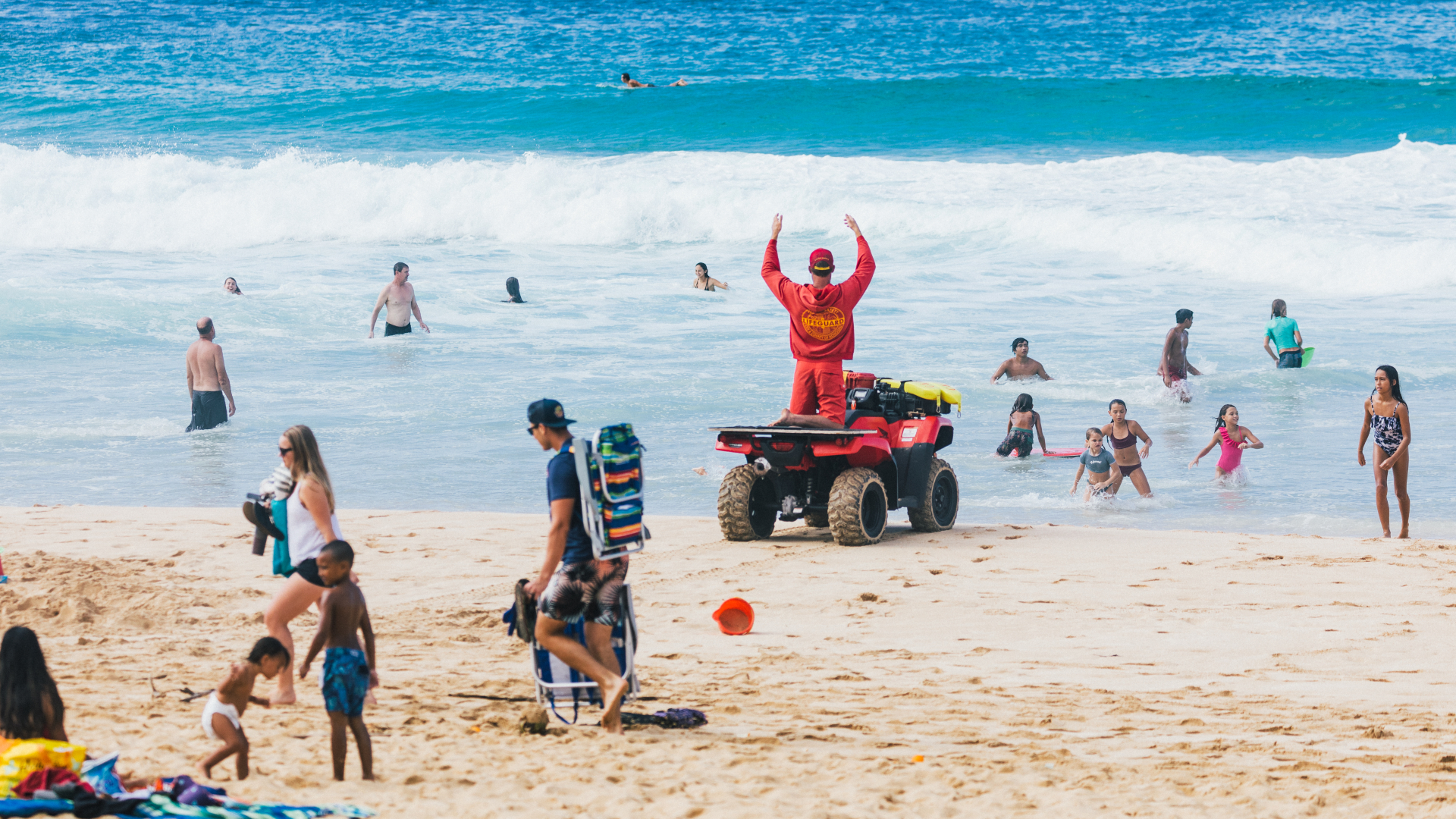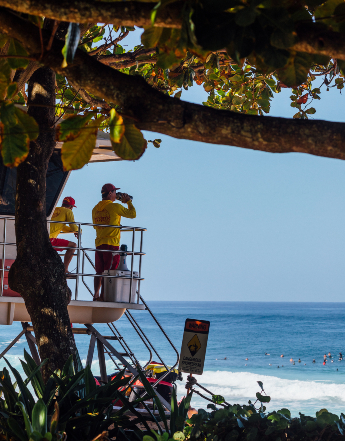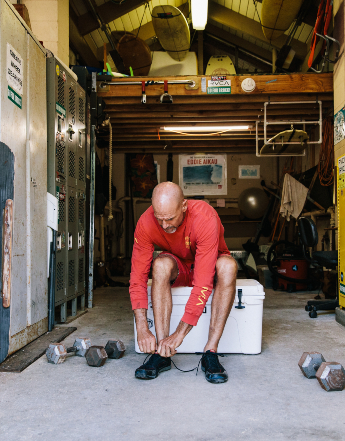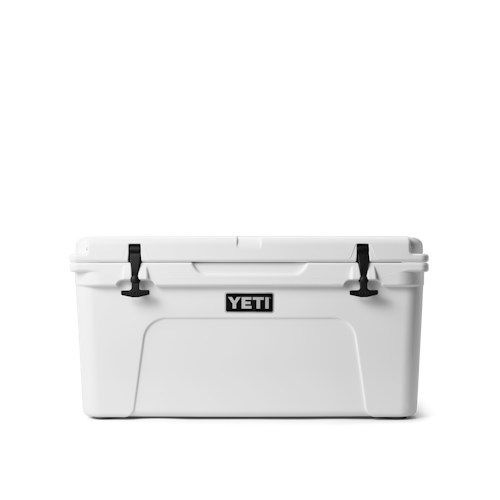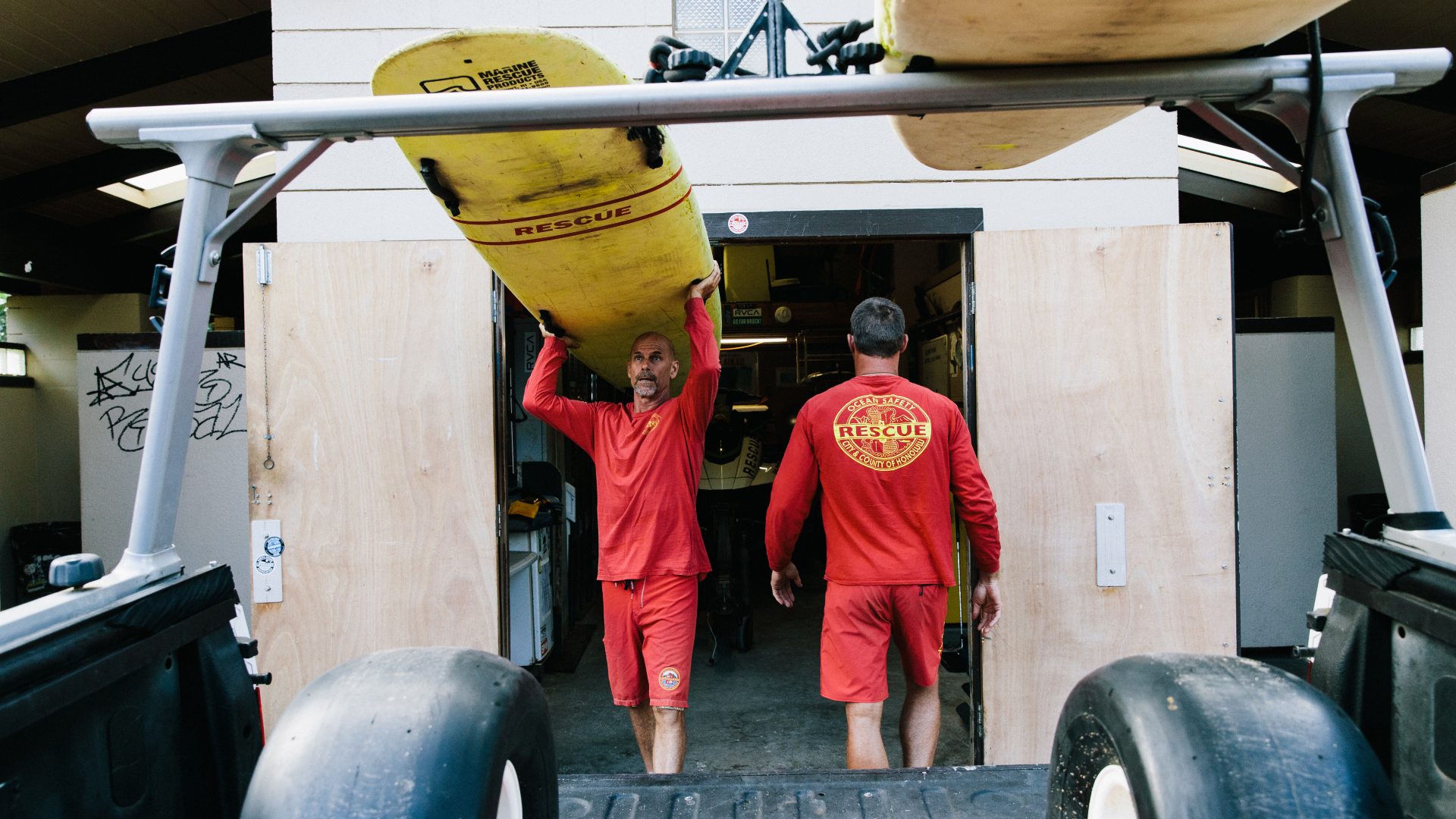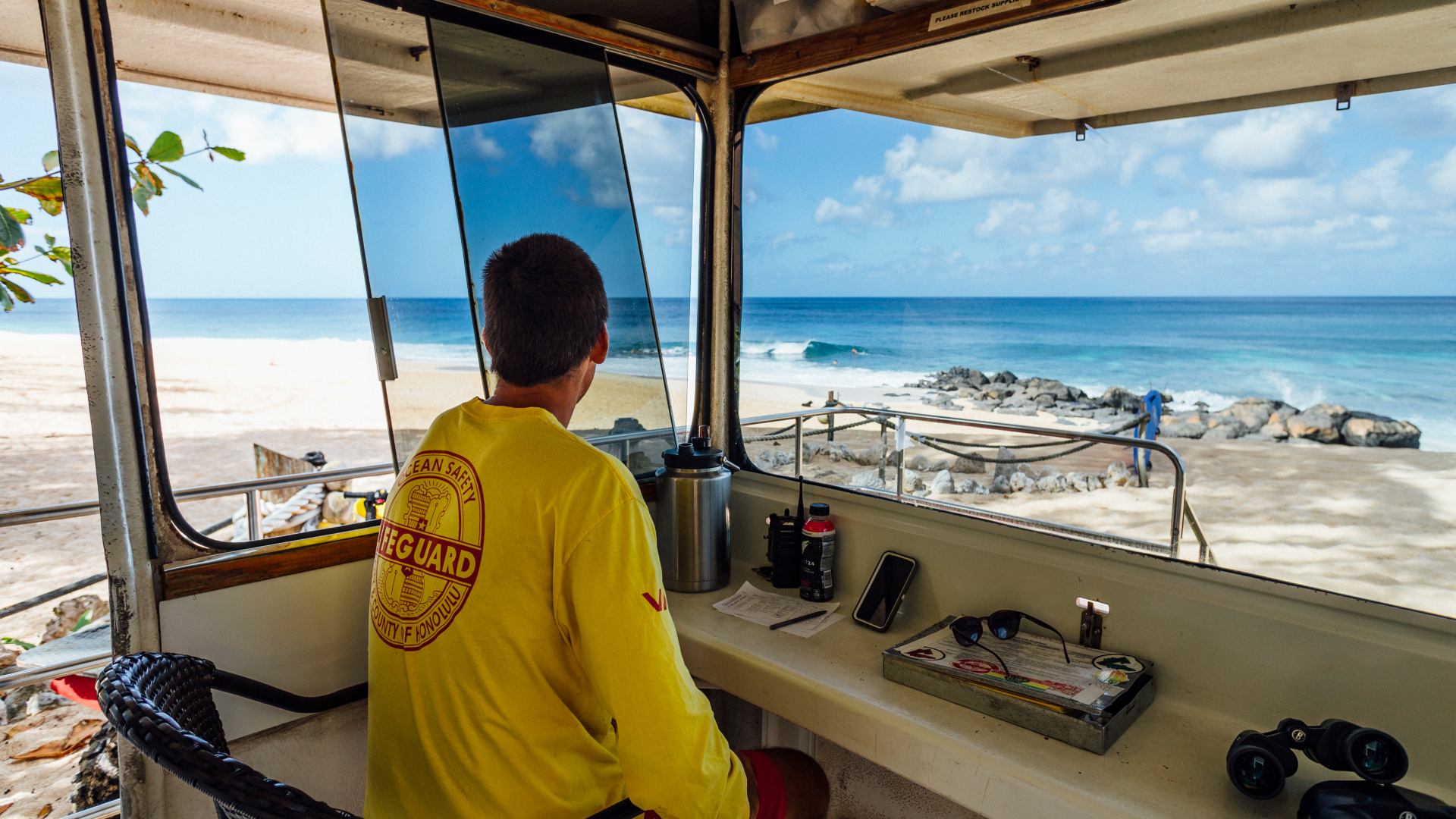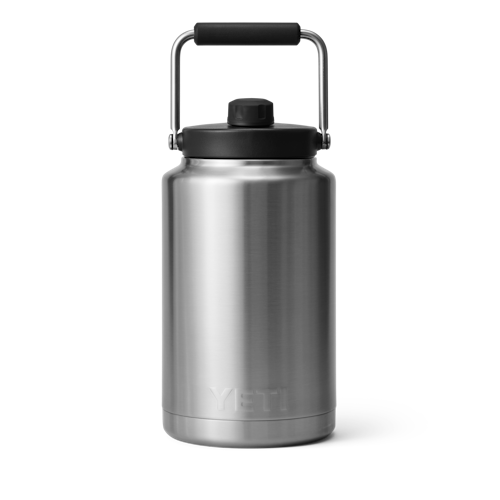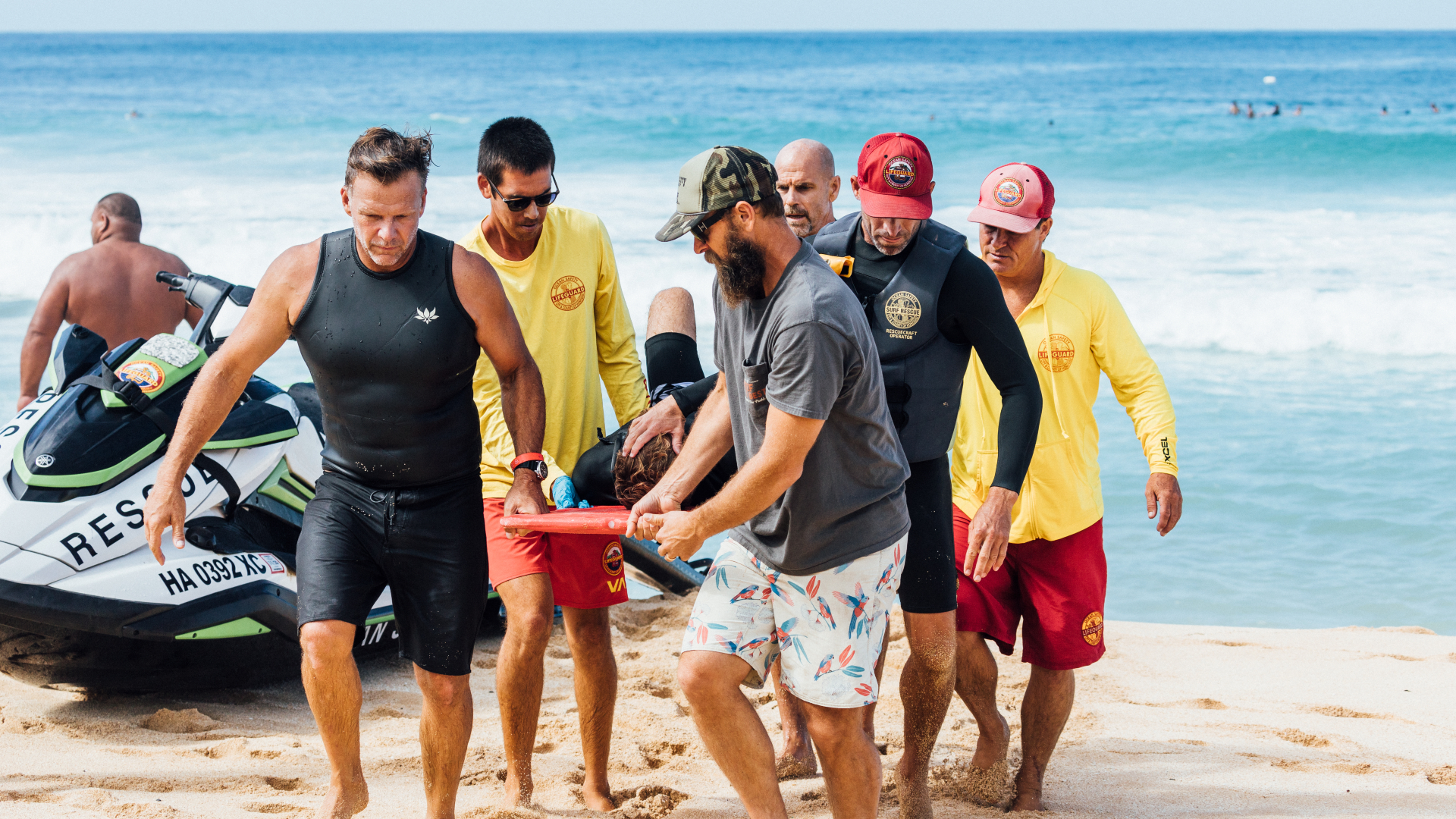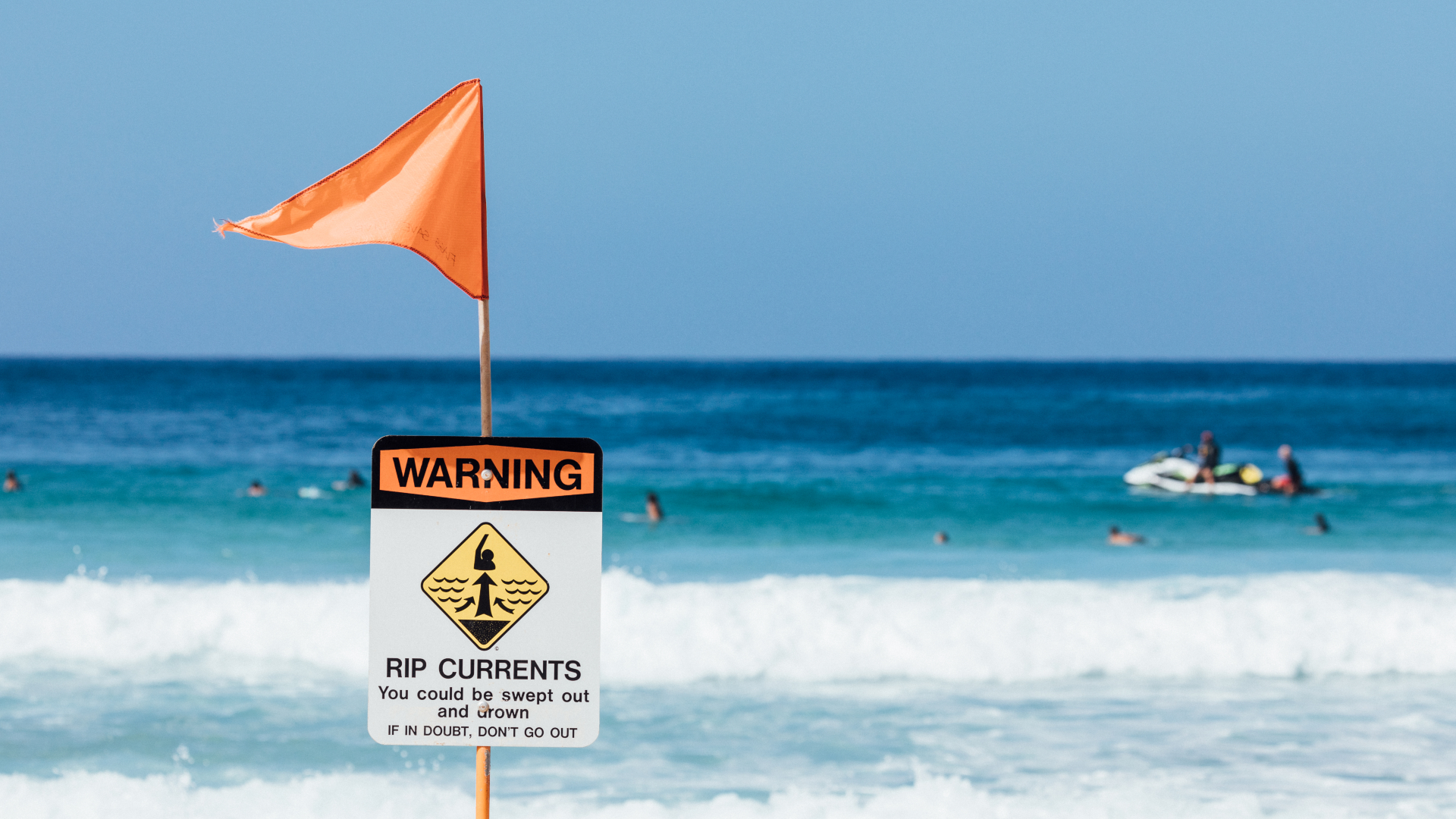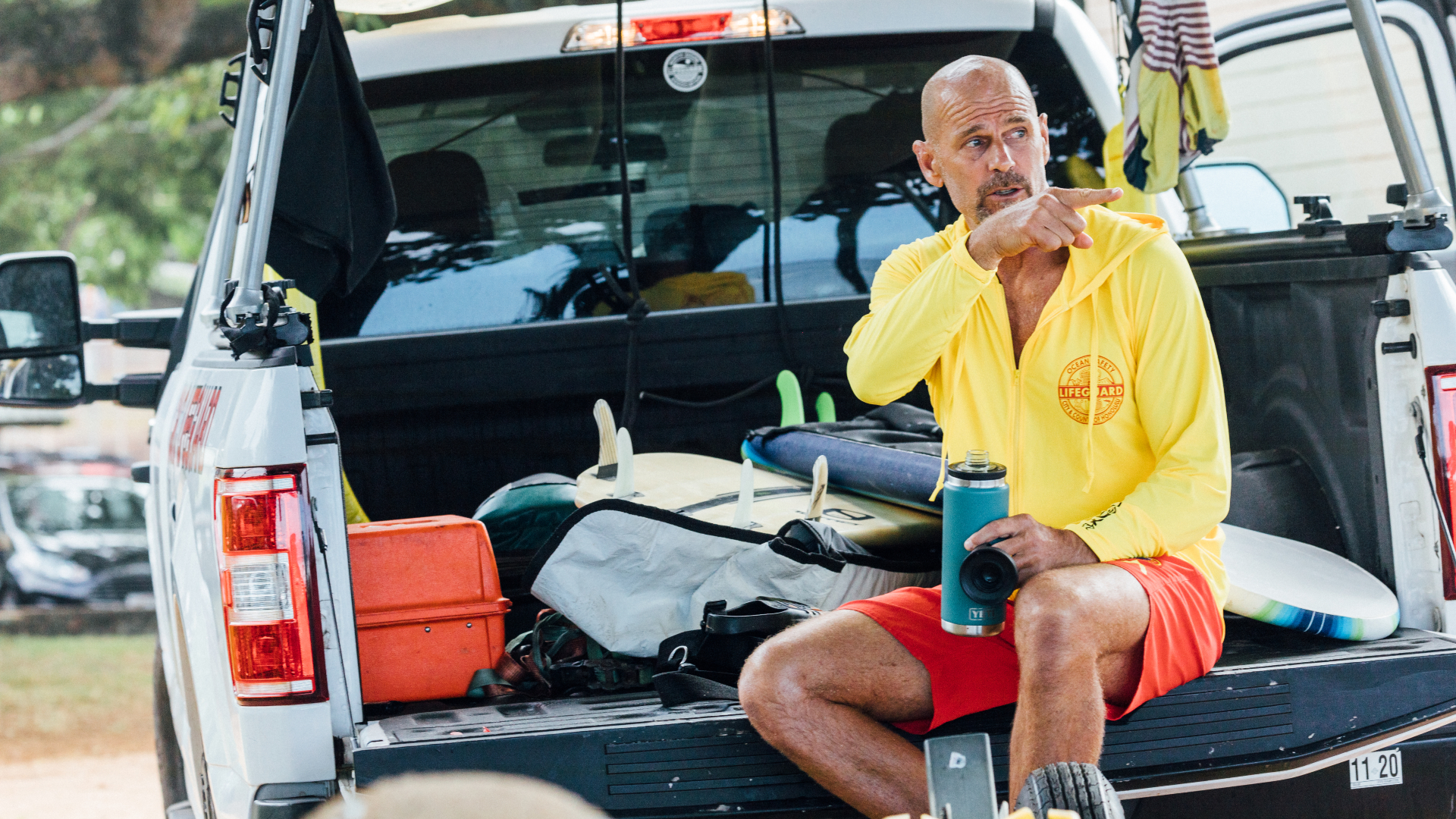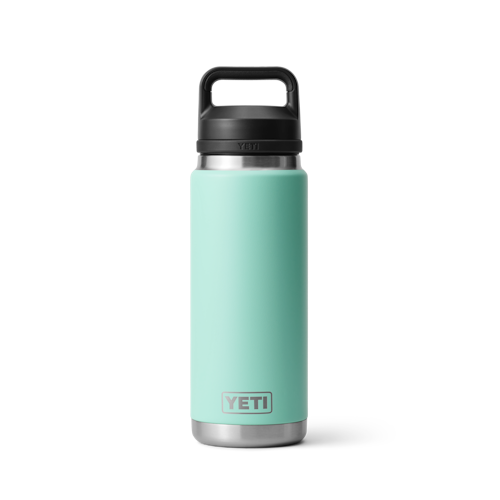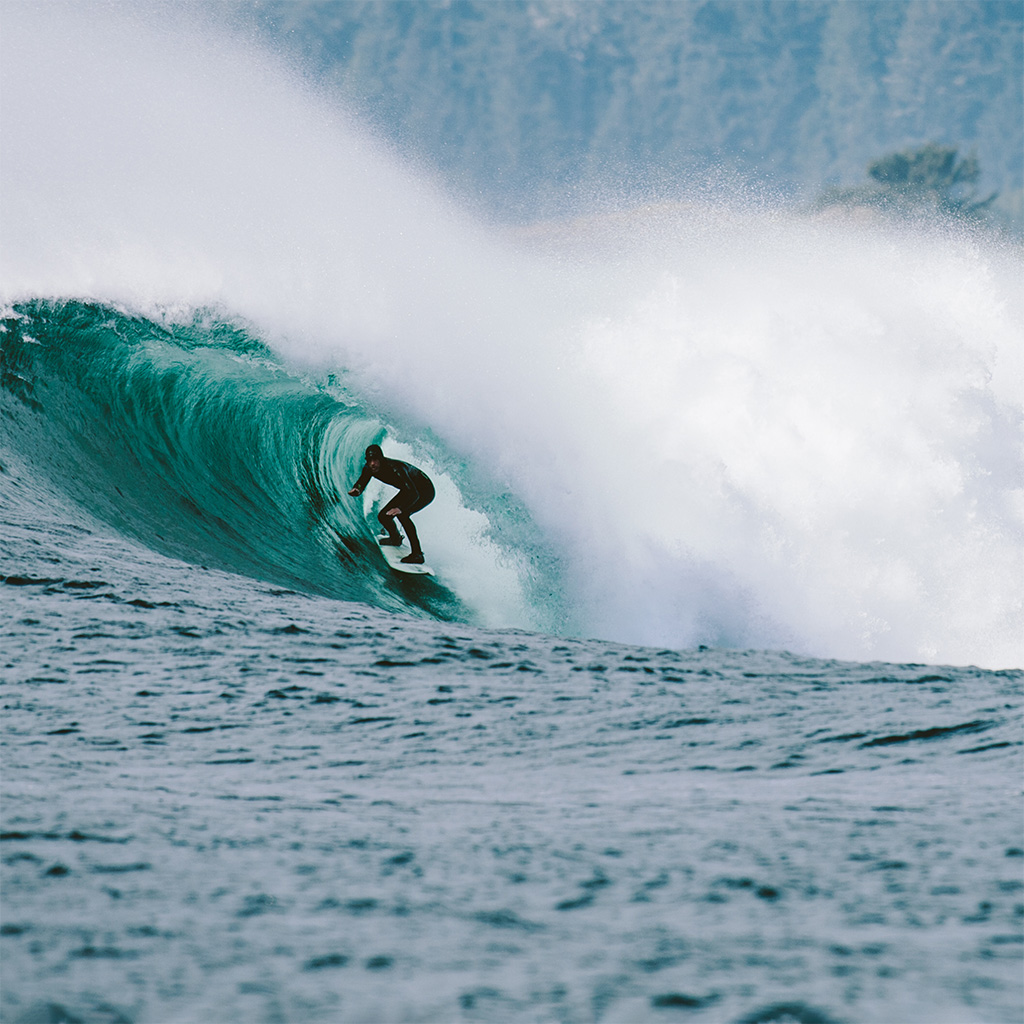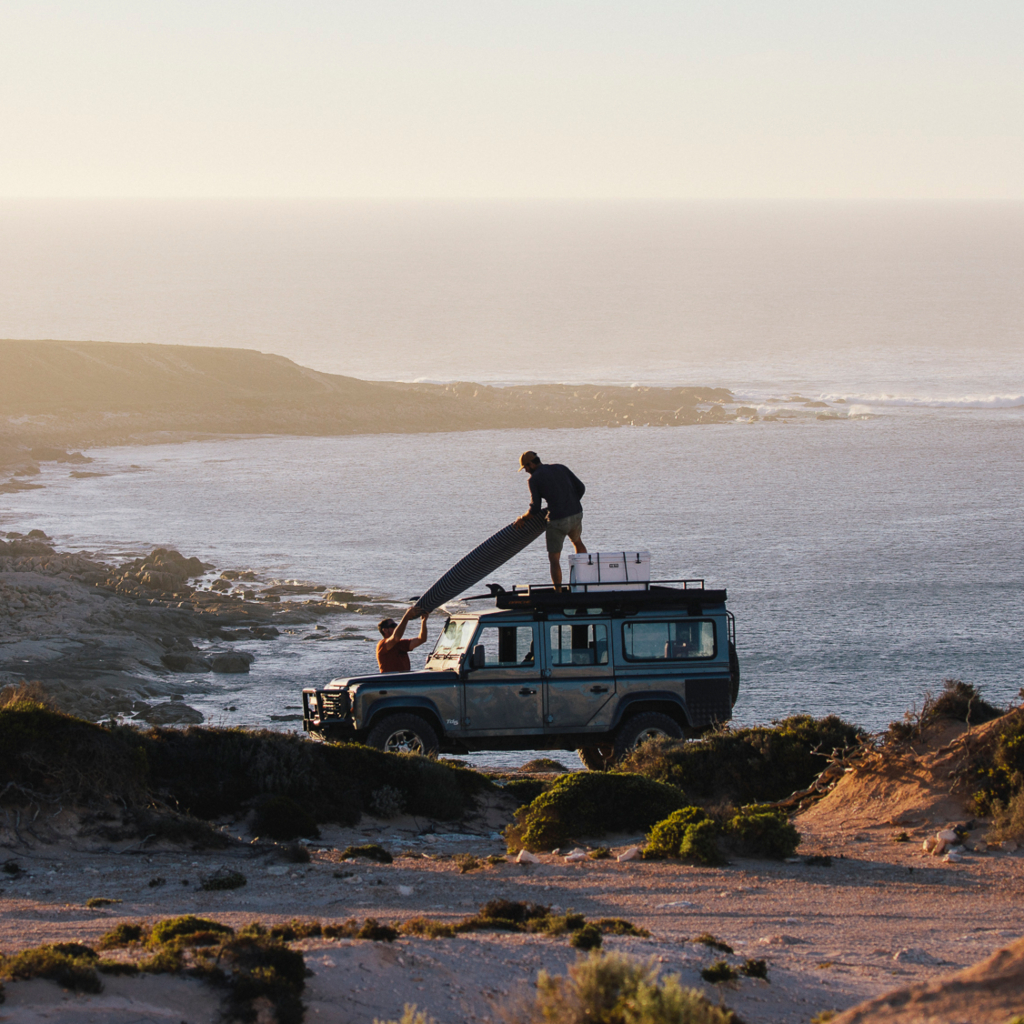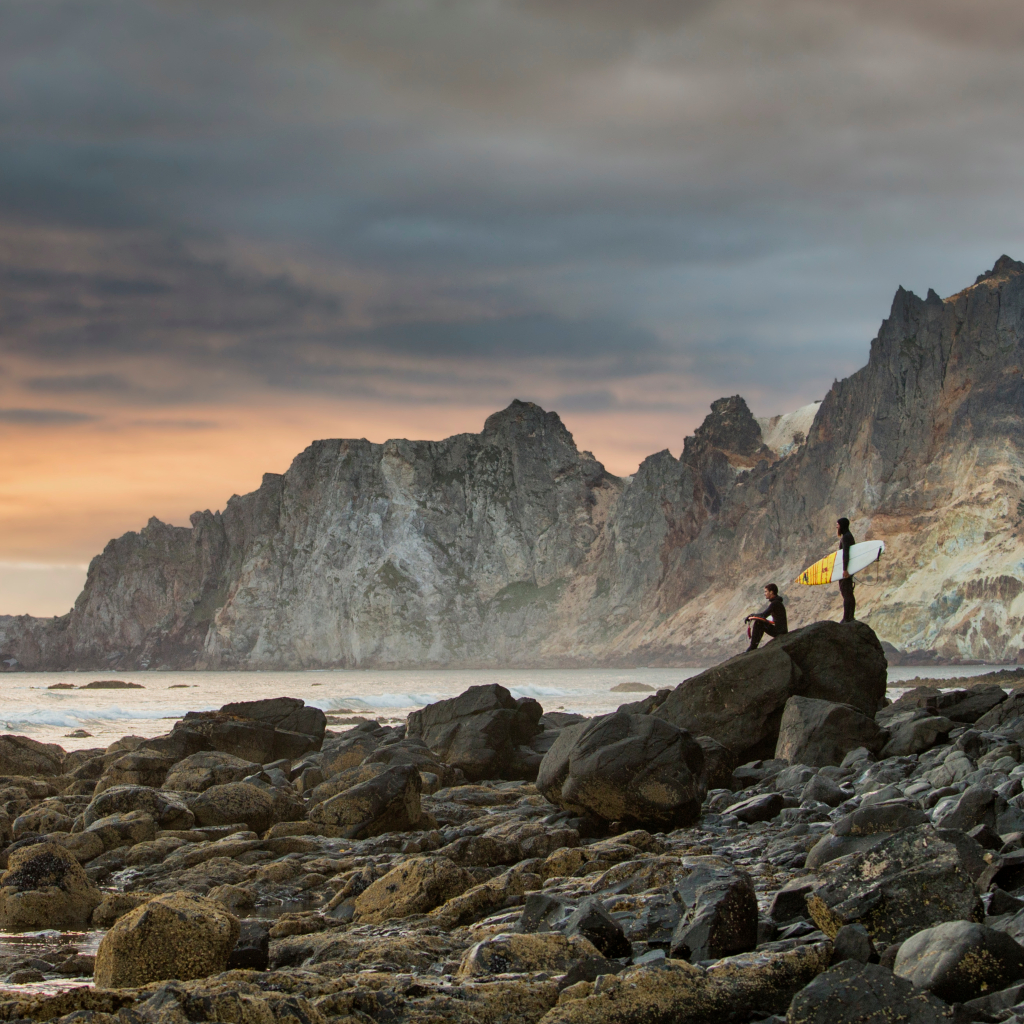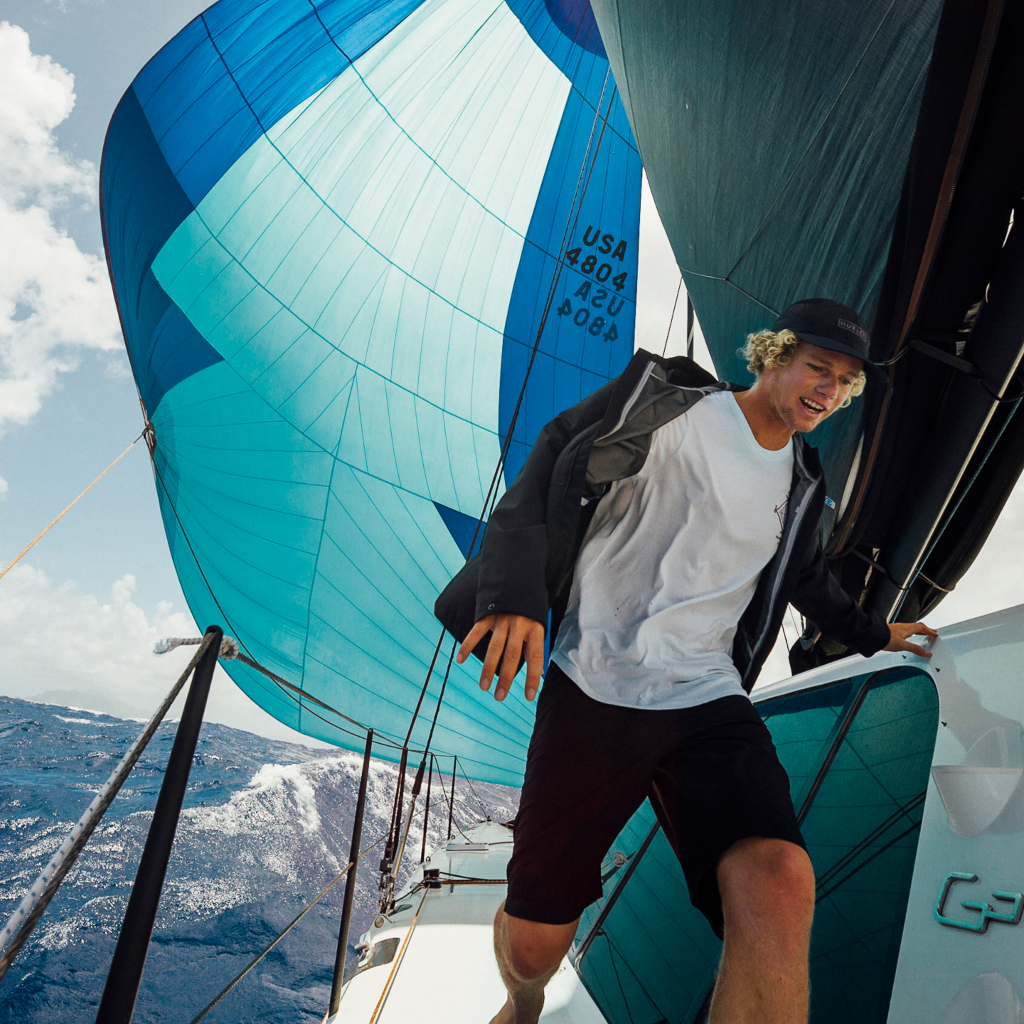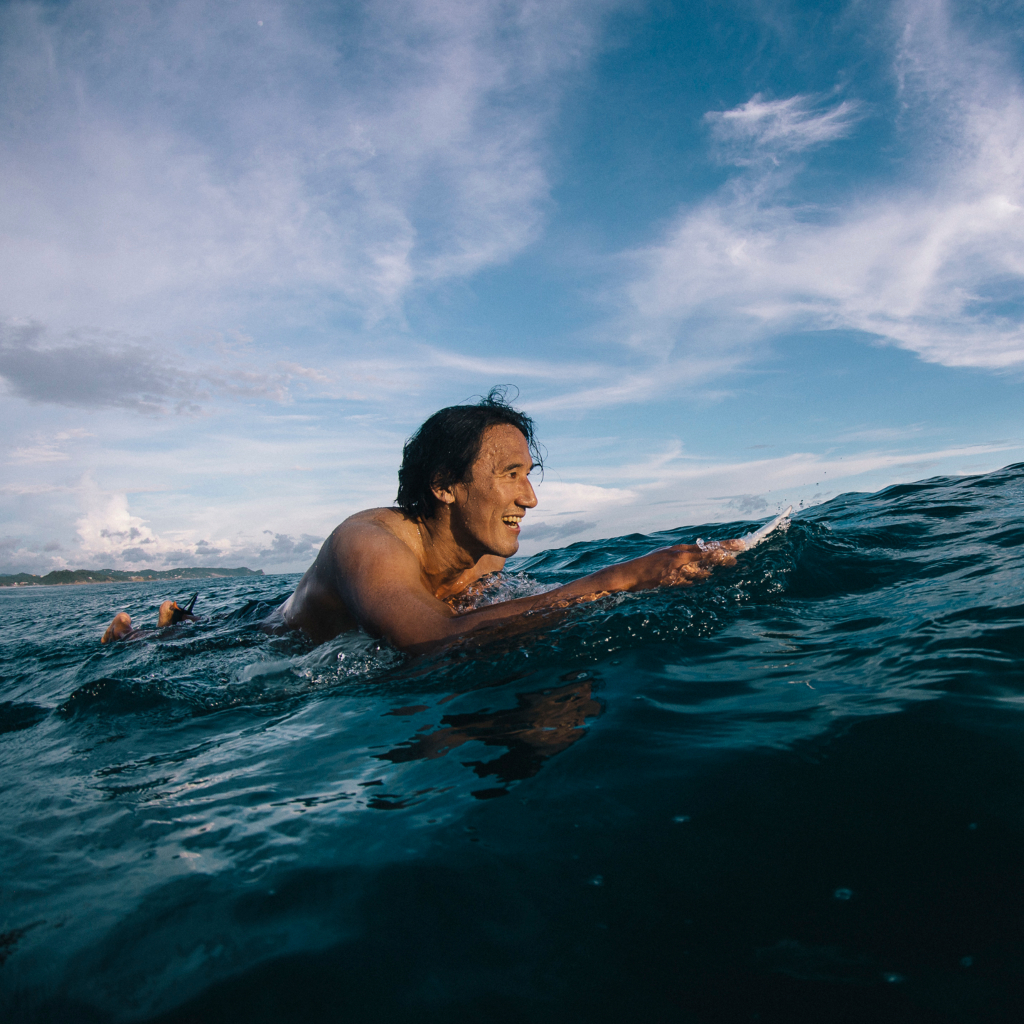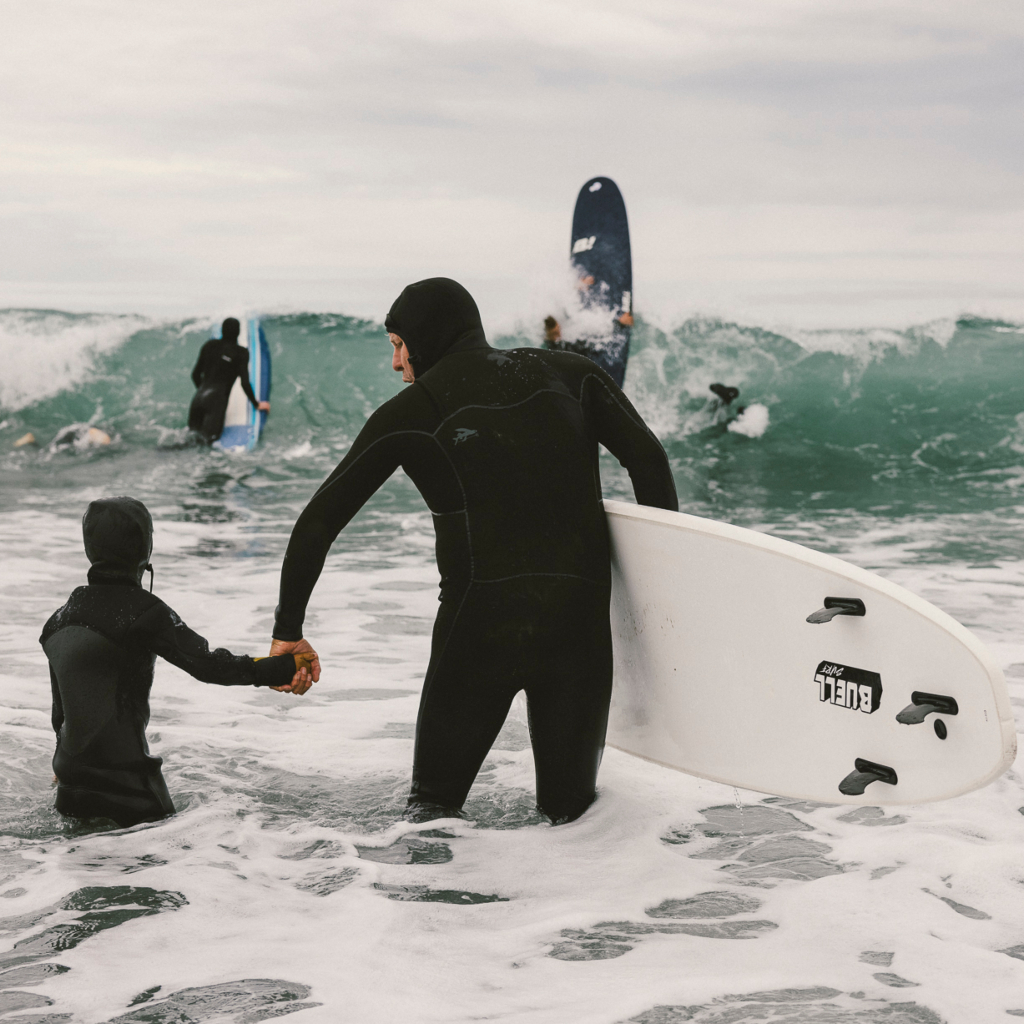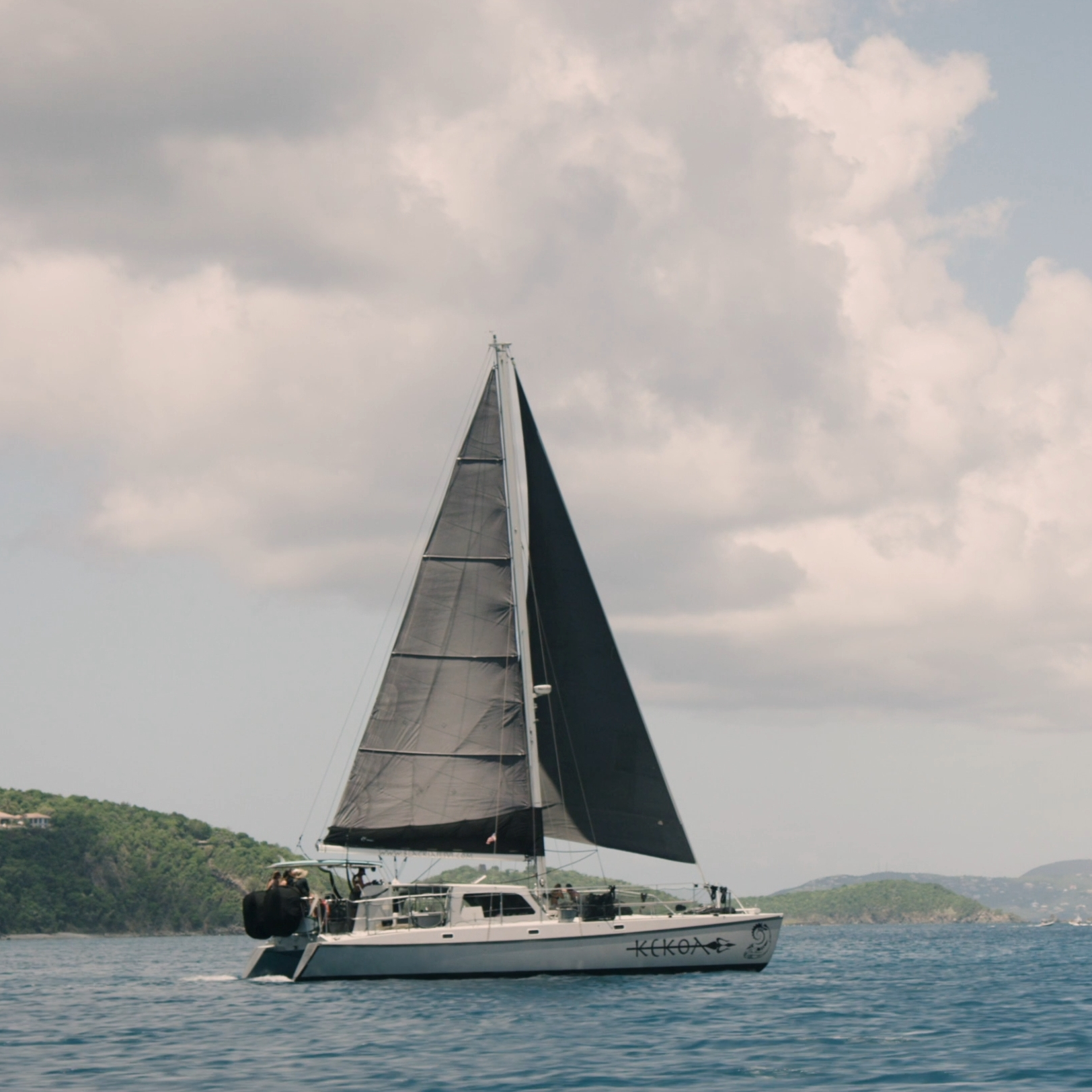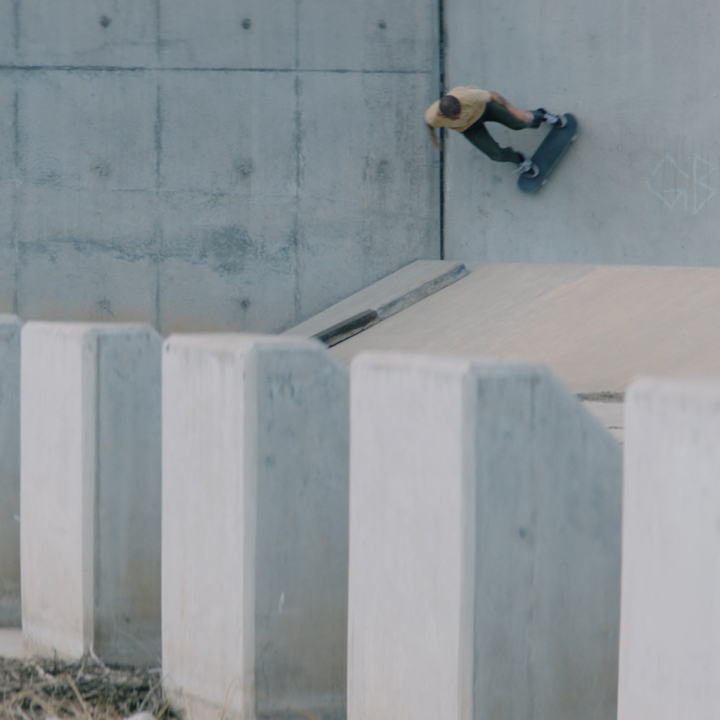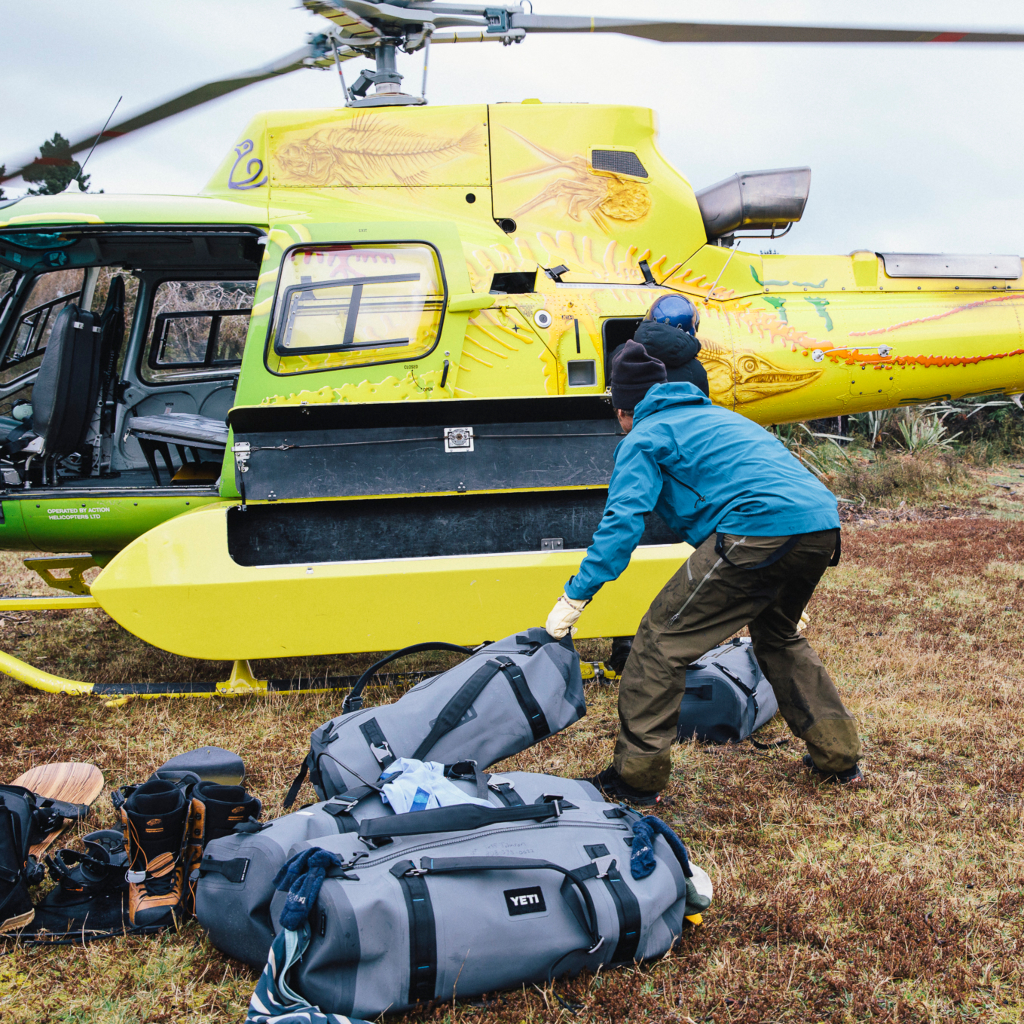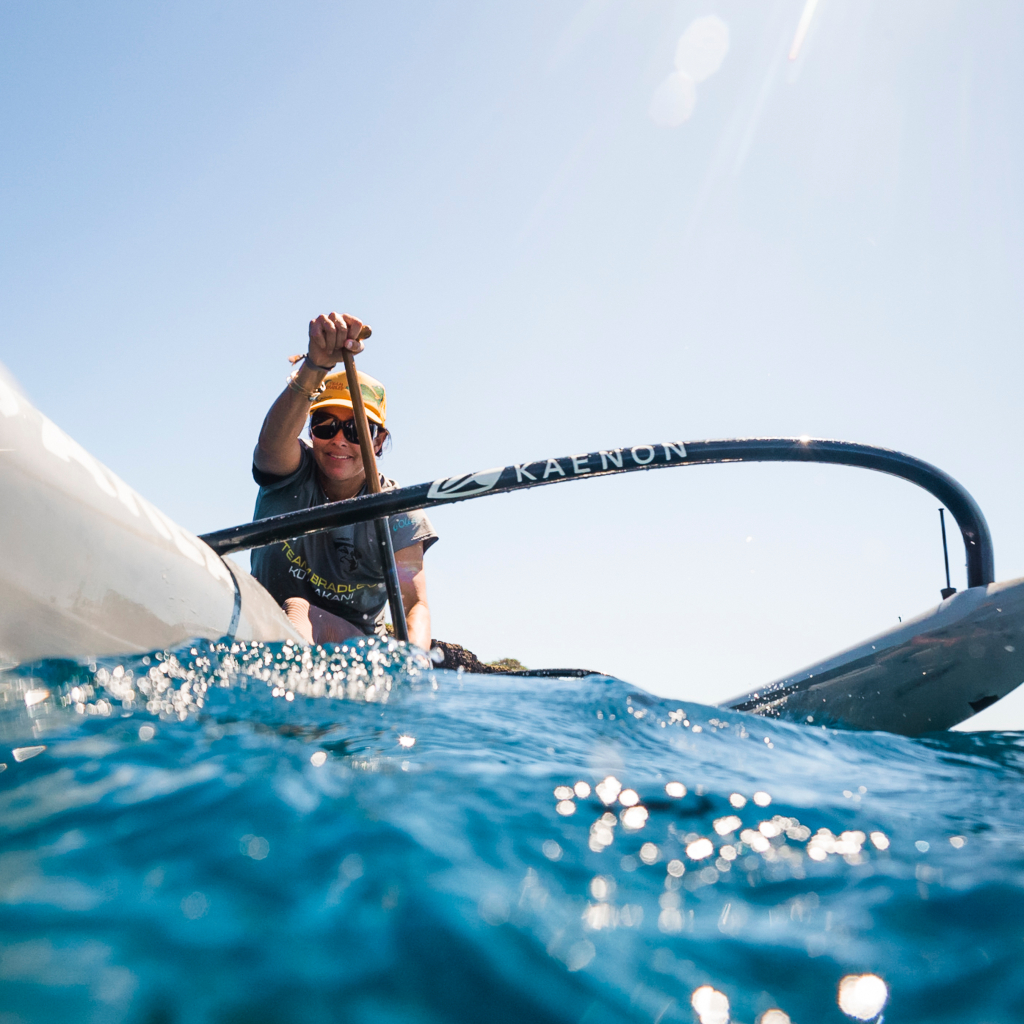There’s a winter storm off the coast of Japan. It’s sitting out there, spinning, tracking eastward. The longer it spins, the stronger it will get, driving energy 1500 miles across the Pacific Ocean toward the Hawaiian Islands. These massive groundswells come out of impossibly deep water to meet the shallow reefs of Oahu’s North Shore, creating some of the biggest and most dangerous surf in the world.
Commonly referred to as the “Seven Mile Miracle”, the North Shore, with its unencumbered proximity to such violent storms, hosts a series of highly sought-after, world-class surf spots. One of them, the Banzai Pipeline, is possibly the most famous wave in the world. Every December for the last 40 years, surfers come from all over the planet to compete in the prestigious Pipeline Masters. It can make or break careers for big names like John John Florence, Kelly Slater, and Gabriel Medina.
The Pipeline arena is like a gladiator pit. You’ve got these huge, powerful waves breaking in two feet of water, on a sharp, jagged reef. The rip currents are unbelievably strong, the sets can be long and stacked, and the conditions are always in flux. The line-up sits just offshore making it not just ideal for pro surfers but spectators, too – it’s rare such an impressive surf break is easy to watch from the beach. But for these reasons, it’s also tempting to up-and-coming, or even completely inexperienced surfers who want to say they’ve surfed Pipeline. Not to mention the out-of-towners who see the bright blue water and just want to get in.
The combination of hungry surfers of all skill levels, swarms of tourists, and essentially triple-black-diamond conditions, puts enormous pressure on the North Shore lifeguards. It’s not a matter of if something goes wrong, but when. “There was a famous Olympic swimmer once who was stuck in a current,” says 20-year lifeguard veteran Tau Hanneman. “He was working against it for a long time and they had to swim out and go and get him.” It can happen to anyone, and it does.
Hawaii lifeguards are some of the most elite watermen and women in the world. When you sign up for the job and earn your spot in that tower, you are filling the shoes of Hawaii’s greatest legends, some of which have become cultural folklore. When the guards are out there surfing on their lunch break, in the pecking order of a word-class lineup, these guys rank. The local community recognizes their immense responsibility and shows a lot of respect for guards.
It’s a self-regulating job with immense responsibility. Not only do you have to rise up to the standards set before you, but there’s no way you’re going to let someone die on your watch.
“I won’t lie, I’m nervous before I go out in the morning,” admits Tau. “I’m on my knees praying just for safety. But if the waves are big and if it comes down to it, you’ve got to get out there to rescue someone. This is our job.” Tau says every day he’s on duty he always jumps in the water, no matter what, to get an idea of the conditions. “This stretch of coastline on the North Shore, in my experience, has got to be one of the most dangerous stretches.”
We’re at the tower talking with Dave Wassel, he’s a professional big wave surfer who has also been guarding on the North Shore for 16 years. “Tau talked me into swimming out at Pipeline on a big day,” says Wassel. “It was huge…six times overhead! I go, ‘what kind of exercise are we gonna do today, Tau?’ He says, ‘Let’s jump in and go for a swim.’ My mistake for asking,” recalls Wassel, laughing. He continues, saying, “but he got my butt out of the chair and into the water.”
There is a unique camaraderie among men who spend 5 days a week, 8 hours a day together, who train together, who save lives, and witness tragedy together. The job asks much of each guard, but it attracts those who have the character to deliver. Interviewing each of them, it was almost impossible to get them to talk about themselves. But they were effusive about their fellow guards. Looking out over the packed beach with thundering surf, Wassel says, “it’s weird to think someone is going to race you into the worst possible scenario. But that’s Tau. That’s a really great partner. I’m rich beyond words for having these guys in my life.”
Brendan Shea has been a lifeguard for close to 30 years and is the senior jet ski operator on the North Shore. “What that really means is I’m just the oldest guy still doing it,” Brendan says modestly, catching his breath between box jumps and push-ups, his morning workout. Brendan and I actually go way back. I used to guard with him on the North Shore back in the 90’s. He was trained in jet ski rescue program when it was just being developed. Like Wassel, I feel so fortunate to have spent time with these guys, honored to say the least. They’re my heroes. And I’ve always wanted to do a much-warranted story on them.
It’s December 2020. The sun is coming up over the island, lighting up the waves like a postcard. It’s a comfortable 75 degrees out, the water about the same—an idyllic Hawaiian paradise evolving from dawn to a perfect winter day on Oahu. Surfers and a colorful assortment of kids, spectators, and sun-bathers – local and visitor – alike are filling the beach. It’s easy to see why over ten million tourists came to Hawaii in 2019, and most with the intention of coming to the beach and getting in the water.
Over the years, Brendan has become a legend (though he’d never admit that) and his protégé, Bryan Philips, is filling his shoes. They operate the ski together. It takes two: one to navigate, and one to perform the rescue. After years of training, Brendan and Bryan are able to operate as a single unit, and even say they can communicate without talking. “I trust him 100%,” says Brendan. “There’s no second guessing, and no time to second guess.”
Their job on the ski requires an intimate knowledge of the entire coastline and all the objective hazards: rocks, reefs, currents, and being able to time the swell for beach landings, especially in a scenario where every second matters. “The jet ski is like the SWAT version of lifeguards,” explains Brendan. “We’re dealing with the high-impact cases or being called in for boats that have capsized.”
Their responsibility lies in patrolling the entire Seven Mile Miracle. When not on patrol, they’re parked at tower 26 where a lot of the action goes down. This tower is at ‘Ehukai Beach Park, right in plain view of the famed Banzai Pipeline.
Today, the Pipeline is double to triple overhead with light, offshore winds and clear blue water. The line-up is packed with surfers, some of them pros that are gearing up for the contest. Brendan and Bryan launch the ski to go for a routine patrol. Keith Malloy is also here with me making a short film on these guys. We walk down to the water’s edge, I bring my camera to get a few shots.
Brendan and Bryan are sitting just outside the line-up surveying the scene. A good-sized set rolls in and the crowd disperses, surfers jockeying for position. A few take off on beautiful waves, pulling into perfect tube rides. I’m looking through my telephoto lens and I see an arm sticking out of churning whitewater, waving for help, and instinctively, my adrenaline surges. Brendan and Bryan have already spotted it and are making their way. In-between sets they quickly motor into the impact zone. Bryan is driving and Brendan is on the rescue sled. In seconds they close in on the victim. Brendan jumps off the ski and hoists what looks like a lifeless body onto the sled. They’ve said that 50% of the time as soon as they get to the victim, the victim passes out. It’s like some weird subconscious thing where the victim knows they are safe perhaps. It’s a strange phenomenon. From where I stand on the beach, Keith and I are thinking the same thing, hoping if anything, that that’s the case now.
Just before the next wave explodes right behind them, Bryan guns it out of there. I can now see Brendan’s face as they near the shore. I know that look. I begin to have flashbacks. Years ago, on a day much bigger than this, we had lost a guy in the same exact spot. He was unconscious and slipped out of a guard’s arms when a wave hit and was swept out to sea. We never saw him again. That experience, that tragedy will stay with me forever. I feel conflicted about shooting photos at this moment, but there are more than enough capable people around to assist if needed. And often, they are needed. The locals here hold the guards in the highest respect, they’re definitely seen almost as superheroes here.
Wassel sprints down the water to meet Brendan and Bryan as they beach the ski. Brendan is with the victim, who seems to be barely conscious and in a lot of pain (I can hear him groaning). Brendan is talking to him quietly and calmly while they transfer him from the sled to the backboard. We hear sirens. An ambulance has been called. Wassel asks Keith and a nearby surfer to help carry and steady the backboard with the victim up to the beach park where they place him on a picnic table. He’s lying flat on his back wearing a C Collar. There’s a hole in his wetsuit where Brendan had cut open to see if there is any bleeding (there is some, but not terrible). It turns out this guy was pounded into a cave in the reef and apparently has multiple broken ribs. He’s stable now and just waiting on his ambulance ride to the hospital. Ironically, he is one of the top pro surfers on the tour. It happens to the best of them.
Behind the lifeguard tower Brenden and Bryan sit on the tailgate of their rescue truck getting some water and having lunch. They’re calm and collected, not as shaken up as the rest of us. Not that it doesn’t affect them, but the frequency of an event like this requires their constant composure. Keith and I are commenting on the odds of this happening while we were filming and they assure us that it’s so busy here on the North Shore these days that the odds, as it turns out, are actually pretty good.
Now we’ve got Bryan mic’d up for an interview. He’s officially on break, but like all the guards, his eyes are perpetually focused on the beach and the people. He’s halfway through answering a question and his eyes dart down the beach. He’s distracted, fixated on someone in the water. He quickly checks to see if anyone else has eyes on the situation and realizes he’s the closest. Bryan takes off running. We all see her, a young woman getting tossed around in the whitewater, close to shore. It’s easy to miss, to be honest. There are plenty of people splashing around out there, some swimming easily a few feet from her. But Bryan recognizes the signs of distress and knows how strong the water is in that zone. She’s on the verge of panic. Bryan gets there and offers her a steady hand, pulling her onto the sand bar. Relieved, she gets on her feet and walks back up the beach. As Bryan is heading back to the lifeguard tower, we see the same young woman pose for a picture with her friends, then jump right back into the water.
Bryan sees this and says matter-of-factly, “I have actually rescued the same person multiple times.” His eyes go back to scanning the beach from end to end. When you’re on one of the most beautiful beaches on earth, it’s easy to forget how dangerous it is.
Fairly recently, on May 2nd, 2017 the City and County of Honolulu celebrated 100 years of lifeguards in the Hawaiian Islands. It’s mind-boggling to think about how many lives these lifeguards have saved in a century. Whether they were politely warned of a dangerous situation or literally dragged out of certain death, these dedicated watermen put their lives on the line every day in order to serve.
A very special thanks to the North Shore Lifeguard Association for sharing their time and expertise with us.
